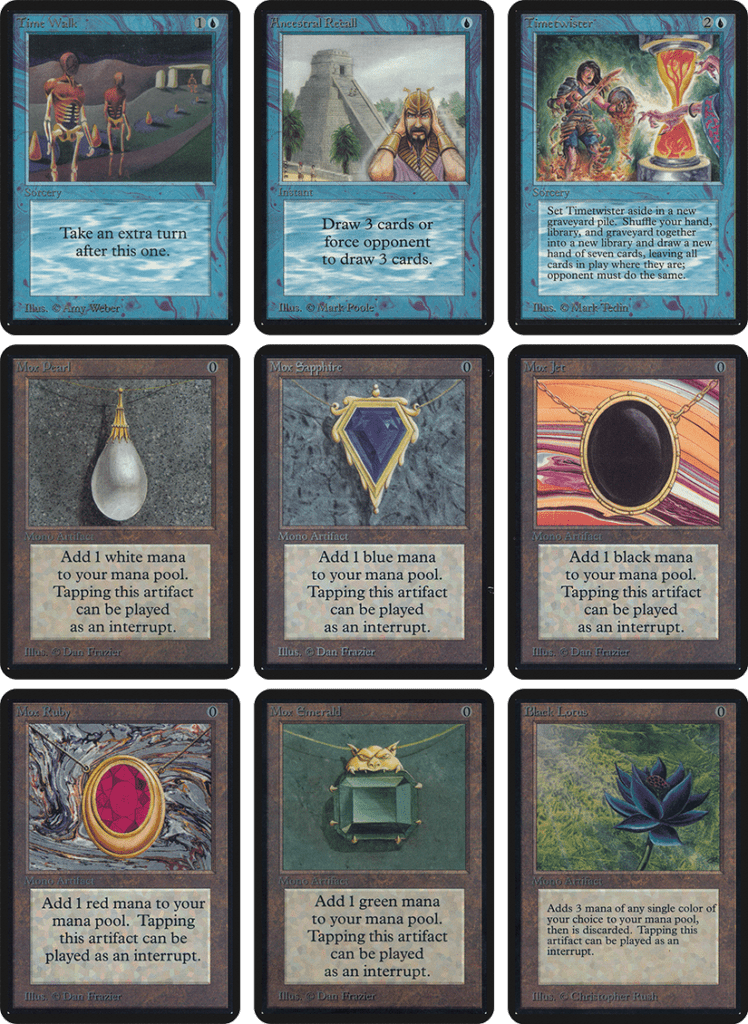Nizzahon looks at a significant event on this day in MTG history. On July 1st, 1997, the Extended format was created!
Welcome to another edition of “This Day in Magic History.” 25 years ago today, the Extended format was created! Extended is a now-defunct rotating format which was played regularly at the Grand Prix and Pro Tour level from 1997 to 2011. It was officially retired as a format in 2013. I have something of a personal connection to this format, because when I first started playing competitively, I was playing Extended Goblins back in 2004! While the format no longer exists today, a look at the creation of this format, and what eventually led to its downfall is useful as we witness the birth of new formats in the present day.
A Brief History of Magic Formats Before 1997
Before we get to 1997, I want to briefly cover Magic’s formats before the creation of Extended, as the context of these other formats is essential when discussing the birth of Extended. While competitive Magic was formally born in 1994 with the first World Championship, at the time, Magic didn’t have formats. Why would it need to? The card pool was small enough that it was just Magic. Some cards were restricted to one copy per deck, but every card that had been printed at that point was legal, with the exception of cards that caused serious logistical problems, like the ante cards or Shahrazad.

However, as new cards came out, new players started to be at a disadvantage when going up against players who had played since the beginning and had easier access to things like the Power 9. This motivated Wizards of the Coast to create a new format called Type 2. We call this format “Standard” today. Just like today, it was a rotating format, where only cards from newer sets were legal. This leveled the playing field, and it also helped motivate players to invest in newer sets!

Mox Pearl | Mox Sapphire | Mox Jet
Mox Ruby | Mox Emerald | Black Lotus
The Power 9 were restricted in Type 1 (Vintage) and entirely banned in Legacy (Type 1.5).
With the creation of Type 2, Magic’s original format where cards from all sets were legal came to be called “Type 1.” This is what we call “Vintage” today. In this format, very few cards were banned. Cards that were deemed too powerful were instead restricted, meaning you could play a single copy of them in your deck.
In May of 1996, Type 1.5 was created. This format has evolved into what we call “Legacy” today. This format allowed cards from every set, but it had an extensive ban list and no restricted list. The Power 9 were banned in Type 1.5 – as were many other powerful cards. This format thus had a lower barrier of entry, as by 1996 it was already getting difficult to get your hands on cards that were staples in Type 1. It also made the format significantly less powerful.
Block Constructed also arrived on the scene in 1996. By this point, Magic sets began to be released in Blocks. These generally consisted of three sets that all had an interconnected story, as well as interconnected mechanical themes. The first of these was Mirage Block Constructed. These formats had a very small pool of cards, with only cards from those three sets (Mirage, Visions, Weatherlight). Like Extended, this format has gone extinct. Block Constructed was last played in 2014, during Theros Block.
So, when Extended was born in 1997, Magic already had four formats: Block Constructed, Type 1, Type 1.5, and Type 2.
The Creation of Extended
When Extended was created on July 1st, 1997, it was intended as a middle ground between Type 1.5 and Type 2. There was still rotation, but it consisted of many more years worth of cards than Type 2 did. Basically, Extended would give you a format where you could still keep playing your Type 2 deck even after it rotated. This was appealing to many players, as it could be frustrating to invest in a deck that was only relevant for a relatively short period of time. Extended well…extended the lives of these decks.
When Extended was first created, it included cards from Revised to Weatherlight. This meant the format had a pool of 11 sets. The format rotated in 1999. With this rotation, the four oldest sets were removed from the format. After that, rotation occurred every three years or so, usually removing the last three years worth of sets.
The first high-level Extended tournament was 1997’s Pro Tour Chicago. For the next several years, it was a regular part of competitive Magic. Several more Pro Tours and dozens more Grand Prixs would feature the format, usually in autumn.
Extended was pretty popular among players who were interested in competitive play. The card pool was large enough and the decks fair enough that there were a lot of different viable competitive archetypes, something that made Extended events quite diverse; something that wasn’t true nearly as often in Magic’s other formats at the time. However, for the entire time it existed, it was not a format that was played a whole lot at local game stores, where the Eternal formats, Block, and Standard were far more common.
What Led to Its Downfall?
Wizards of the Coast tried various things to make the format more appealing to more players, but their attempts largely failed, and some of them even alienated players. In 2009, they drastically reduced the number of sets in the format, and also began rotating every year. This decision largely seems to be from a miscalculation on the part of Wizards of the Coast. They seemed to think that the reason people weren’t interested in the format was because it was too big, with too many archetypes and this was a barrier of entry for new players. But in reality, the wide openness of the format was one of the things that made the format appealing. The format became homogeneous. Extended started to look a whole lot like Standard, right down to tons of Faerie decks and Jace, the Mind Sculptor. There may not have been any way to save the format, but making the format look more like Standard definitely wasn’t the way to do it.

Just as many players became alienated with Extended, the Modern format arrived on the scene. This format didn’t rotate, but it still featured a card pool somewhere in between Legacy and Standard. It also helped that Modern banned cards like Stoneforge Mystic, Bitterblossom, and Jace the Mind Sculptor, which had made Extended uninteresting. Modern began as a digital format on Magic Online, and it became so popular that it replaced Extended as the format for 2011’s Pro Tour Philadelphia. After that, Extended was never again played at Magic’s highest level of competition, and it was officially retired in 2013. If you want to know more about how Modern usurped Extended, there’s actually another article in this series that covers that topic!
Should We Have an “Extended” Format Today?
Today, Standard is our only rotating format. This makes sense, because one of the problems with Extended turned out to be that it rotated, something that really annoyed players. We also have plenty of different constructed formats these days. You can play Standard, Historic, Pauper, Pioneer, Explorer, Alchemy, Modern, Legacy, and Vintage. That’s already a plethora of options! That said, adding an Extended-like format to the mix might be interesting. For all the problems that rotation has, there are actually some upsides to it. Namely, it means the format has to constantly change. While all formats change to some extent as new cards are printed, there still isn’t a ton of turnover in all of the non-rotating formats.
One potentially interesting option is to have a Commander format with a rotation like Extended. While there are definitely some downsides to such a format, there is some potential upside too! This would help level out the power-level of decks and allow players to complete their decks on a smaller budget. Of course, the downside is that your deck would have to change every few years, but it might make for an interesting format!
Parting Words
While Extended ultimately ended in failure, it was a format that was part of the fabric of competitive Magic for 14 years, making it a big part of Magic history! It seems likely that one of Magic’s many formats that exists today will eventually find itself in a similar position. Which one do you think it will be?
That does it for this article! I’m taking next week off, but I’ll be back before long with a look at another important event in Magic history!

Jacob has been playing Magic for the better part of 24 years, and he especially loves playing Magic’s Limited formats. He also holds a PhD in history from the University of Oklahoma. In 2015, he started his YouTube channel, “Nizzahon Magic,” where he combines his interests with many videos covering Magic’s competitive history. When he’s not playing Magic or making Magic content, he can be found teaching college-level history courses or caring for a menagerie of pets with his wife.

